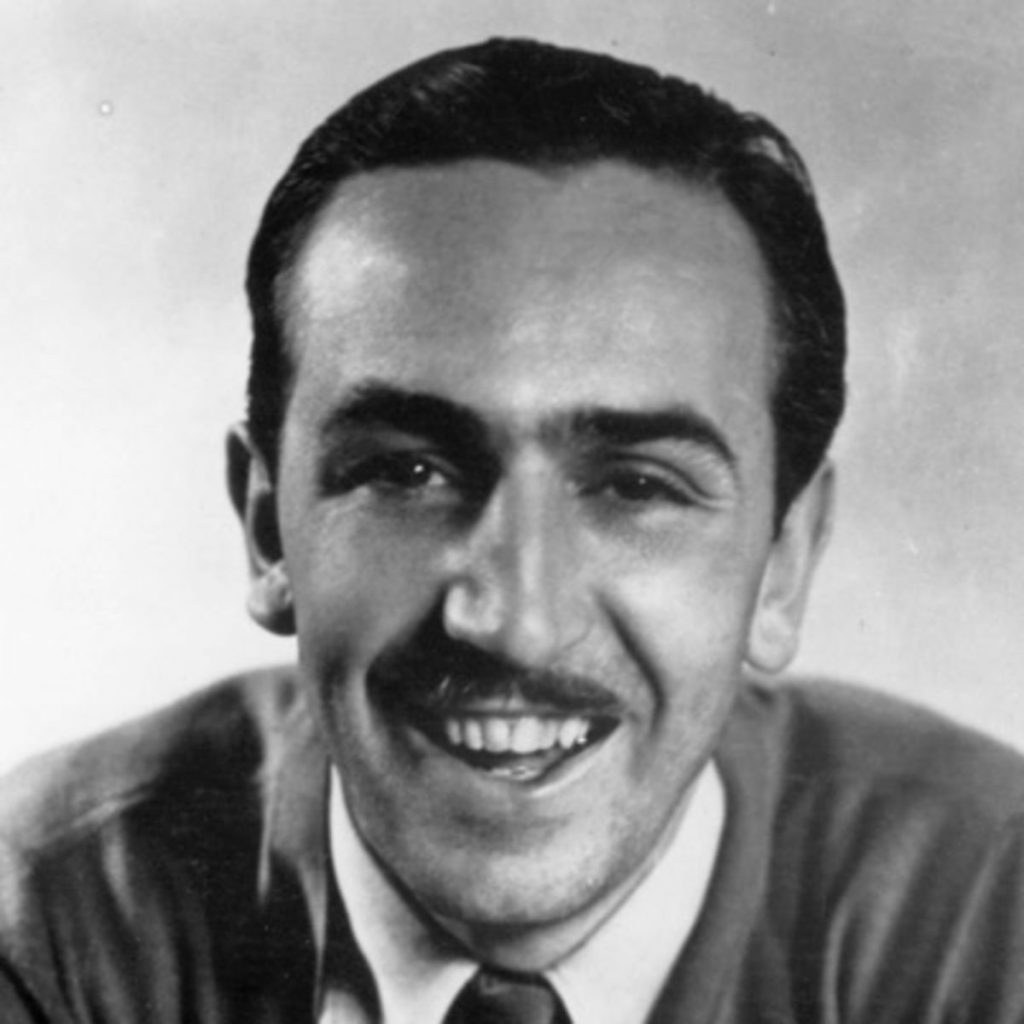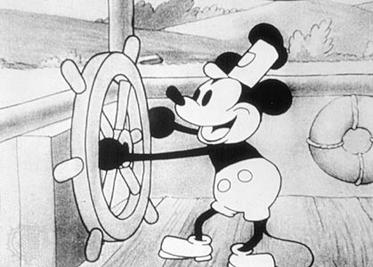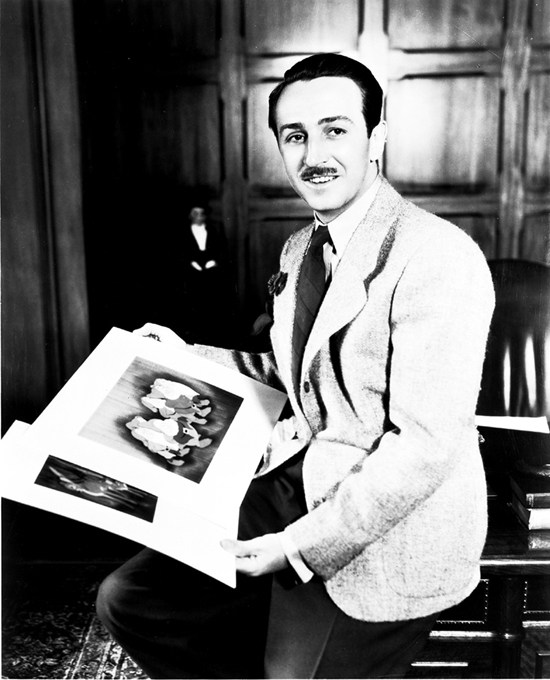Walt Disney is a name everyone around the world knows. Famous for his animated movies such as Snow White and the Seven Dwarves or Pinocchio. Not only that, but he also founded and created two theme parks, Disney Land and World. His works are still popular today, with more being made by the studio he founded with his brother, Walt Disney Productions.
Walter Elias Disney was born on December 5, 1901 in Chicago to Elias and Flora Disney. Walter, who would later be known as Walt, had four older brothers, and a younger sister. At the age of four, Disney moved to a farm in Marceline, Missouri in 1906. Disney was notably artistic at a young age, often found practicing drawing cartoons he had seen and quite good with watercolor. In 1909, he began school in Marceline with Ruth, his younger sister.
Two years later, the family moved from Marceline, to Kansas City, Missouri. While Disney attended school in Kansas City, he befriended Walter Pfeiffer who was the one to introduce Disney to theater, vaudeville, and motion pictures. The two became very close friends.
[ebaylistings]
When Disney’s father purchased a newspaper delivery route for both the Kansas City Times and The Kansas City Star, Disney and his brother, Roy, were the ones to make the route every morning and evening. Because of morning spent delivering newspapers starting at 4:30, Disney was noted to have fallen asleep often during class, his grades dropping too. Disney and Roy kept doing this for six more years to come. Disney also attended courses in art and cartooning while in Kansas City.
Disney and his family moved once again in 1917, this time back to Chicago. At his new school, Disney would draw cartoons for the school’s paper. His cartoons were primarily focused on World War I. Not only that, but Disney also started to attend the Chicago Academy of Fine Arts for night courses.
When he attempted to join the army while at war with Germany, he was instead rejected because of his young age. So, Disney joined the Red Cross, but only because he had lied about the year of birth on his Birth Certificate. In September 1918, Disney worked as an ambulance driver for the Red Cross. Later, they sent him to France. When he arrived, the war had already ended.
By October of 1919, Disney had moved back to Kansas City. Working at the Pesmen-Rubin Commercial Art Studio as an apprentice artist, Disney drew advertisement illustrations for theater programs and catalogs.
Disney and his friend Ub Iwerks were laid off from their job in January 1920. The two decided to create their own business. They called it the Iwerks-Disney Commercial Artists. Disney and Iwerks had trouble gaining customers, so Disney left temporarily. He began working at the Kansas City Film Ad Company. Iwerks soon joined him, abandoning their business.
During his time at the Kansas City Film Ad Company, Disney’s interest in animation began. He experimented with it at home when he was not at work. Disney realized quickly that a better route than cutout animation would be cel animation. Him and his co-worker Fred Harman opened their own animation business after Disney failed to convince his former boss at the Kansas City Film Ad Company to help him. The two of them created cartoons they called “Newman’s Laugh-O-Grams” which were mainly shown at the Newman Theater. Disney also began using Aesop’s Fables for inspiration. He created a new set of cartoons that were based on fairy tales called “Laugh-O-Grams.”
In May of 1921, the Laugh-O-Gram studio was created. At his new studio, Disney had Rudolf Ising, Hugh Harman, and Ub Iwerks hired to help him with his cartoons. The studio did not do as well as expected though and went bankrupt right before Disney had a twelve minute cartoon based on Alice in Wonderland produced.
After the bankruptcy of his animation studio, Disney left for Hollywood in July of 1923. There, he attempted to sell his Alice in Wonderland cartoon, Alice’s Wonderland. Margaret J. Winkler, a film distributor from New York, was losing the rights to her both of her cartoon series. She signed a contract with Disney in October because of her need for a new series. Six comedies based on Disney’s Alice’s Wonderland would be produced. So Disney and his brother Roy created the Disney Brothers Studio to have his films produced.
Lillian Bounds, an ink artist, married Disney in July 1925 after she had worked with him for a few months. Eight years later, Lillian gave birth to a daughter they named Diane in December. In December of 1936, they adopted a baby girl named Sharon. Lillian and Disney were very careful that their daughters were not photographed or in the press.
Alice’s Adventures ended in July 1927 after Margaret Winkler handed her company over to Charles Mintz, her husband. Disney’s main reason for ending the show was because he wanted to try new forms of animation. He had also grown tired of working on the same series. So Disney created the Oswald series. Mintz refused to have the series shown unless Disney would let him reduce his pay. Disney would not accept this, causing him to lose the majority of his staff.
With help from Iwerks, Disney created Mickey Mouse in replacement of Oswald. Lillian had earlier advised Disney against the original name of Mortimer. She was the one to come up with the name Mickey. Iwerks worked to make Disney’s sketches easier to animate and soon they had begun animating Mickey Mouse. Until 1947, Disney would act as the voice of Mickey.
In May of 1928, Mickey Mouse was first shown in Plane Crazy and soon after in The Gallopin’ Gaucho. Disney and Iwerks were unable to find someone to distribute the cartoon. So, Disney got to work on adding sound to his cartoon. Steamboat Willie was the first ever animated short to include sound. Disney was quickly able to find a distributor for his shorts. Pat Powers “Powers Cinephone” would be the new distributor. Disney’s cartoons began to gain popularity quickly, especially because sound was included.
Disney worked with a professional composer and arranger named Carl Starling on his next series, Silly Symphony. While Disney did the sound, Iwerks drew and animated the first short, The Skeleton Dance. Many animators and cartoonists were hired around the same time. Later they would be called the Nine Old Men.
Mickey Mouse and Silly Symphony were both doing very well. Disney and his brother Roy, however, realized that they were not getting paid justly. When he asked for his pay to be raised, Powers would not accept it. So, Iwerks was hired to work for Powers instead of Disney. Disney became worried that his studio would have to close because Iwerks was so important.
[ebaylistings]
Luckily, Disney was able to quickly sign a contract with Columbia Pictures. His Mickey Mouse cartoons were even gaining popularity outside of the country! Disney began to work on a fully colored cartoon using three-strip Technicolor. He called this one Flowers and Trees. It was created in 1932. From there, all his Silly Symphony shorts were also in full color from a deal he signed, permitting him to use three-strip Technicolor until August of 1935.
Flowers and Trees won best Short Subject, or cartoon, at the Academy Awards that year. That was not his only nomination in the category though. Mickey’s Orphans was also nominated and though it did not win, Disney was presented with an Honorary Award for his creation of Mickey Mouse. His next film was produced in 1933, The Three Little Pigs. This won him yet another Academy Award in the same category. He was only getting more and more successful.
Next, Disney began to work on Snow White and the Seven Dwarfs, which would take four years to create. Many speculated that this new film would send his company bankrupt, as it ended up being more than three times over their budget, $1.5 million. Disney worked as hard as possible to make sure that his newest animation would be as realistic as he could make it. In December of 1937, Snow White and the Seven Dwarfs, was premiered. It was praised highly by many and would go on to become the most successful motion picture in 1938. They made over $6.5 million dollars. Disney was awarded yet another honorary award. From there, he would go on to create Pinocchio and so much more.






